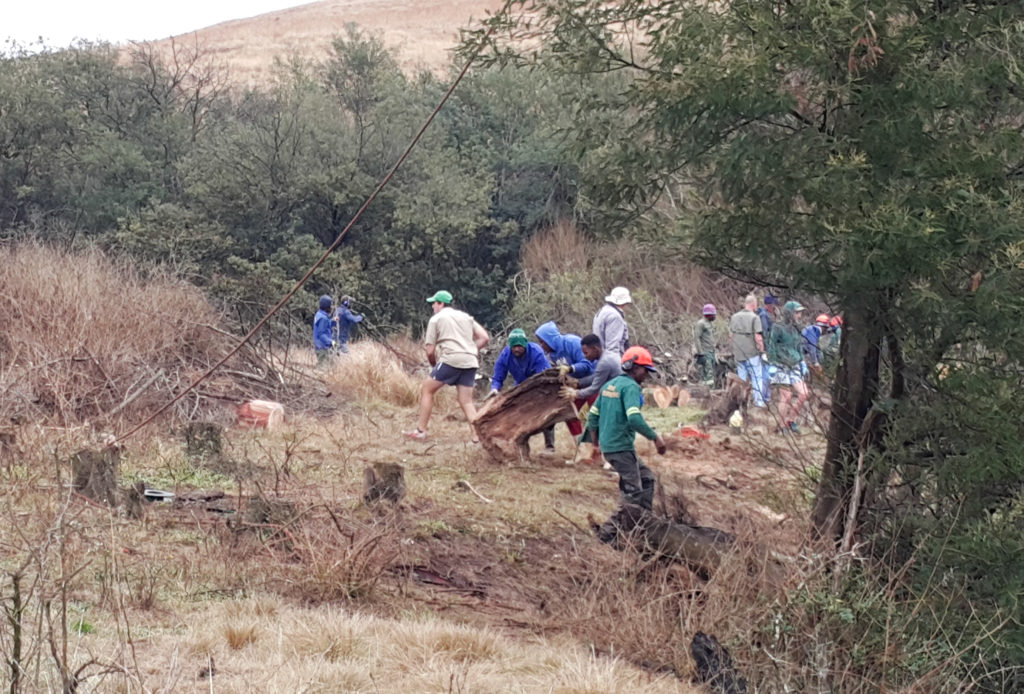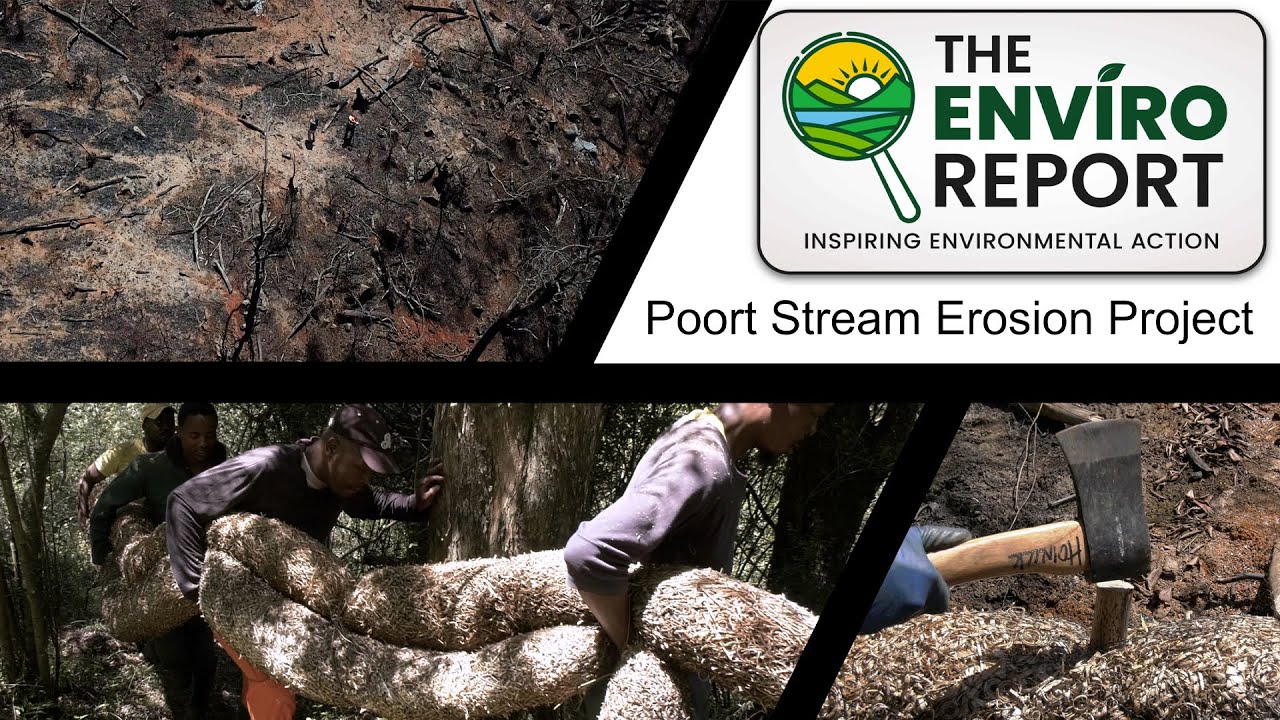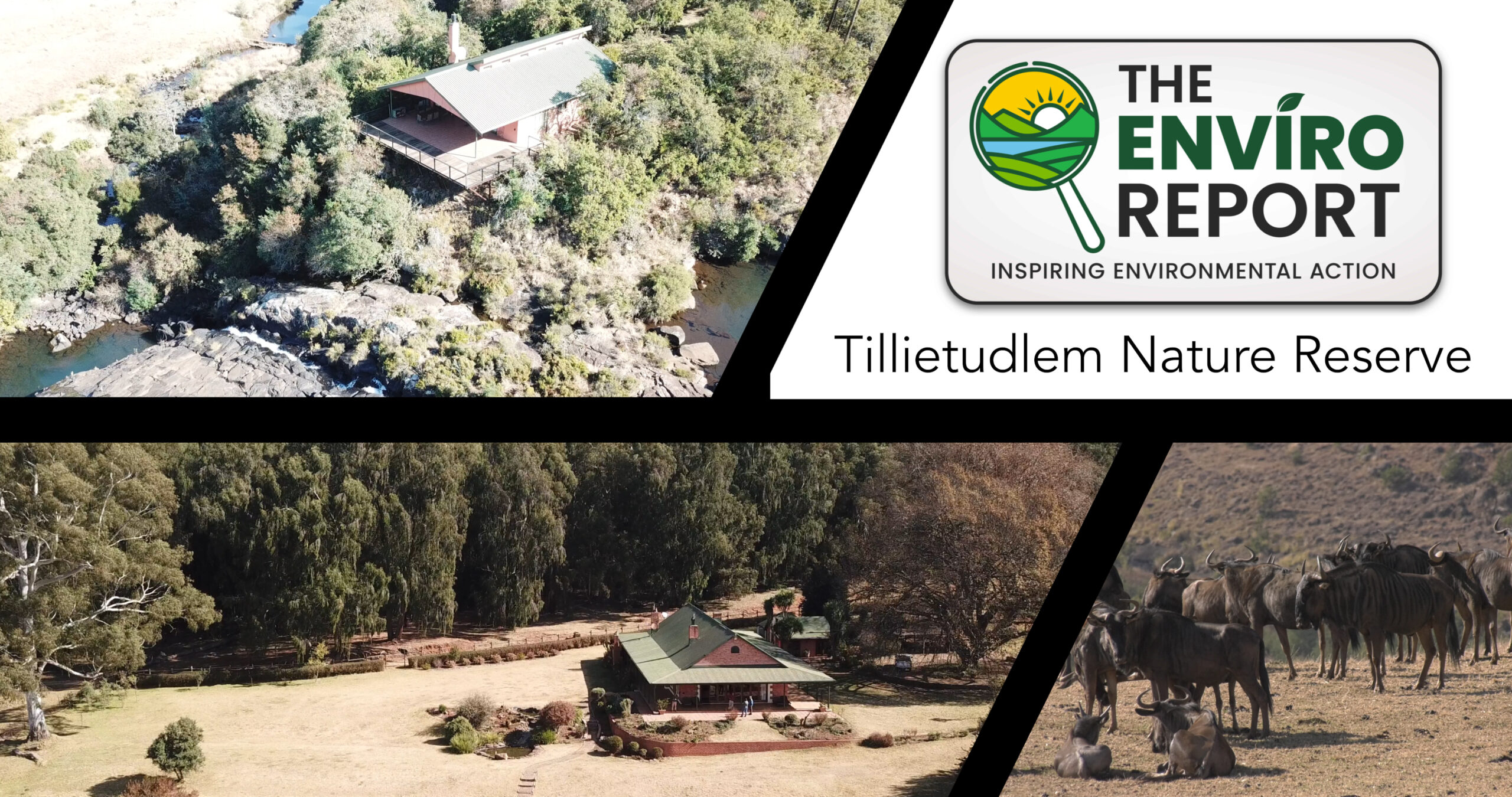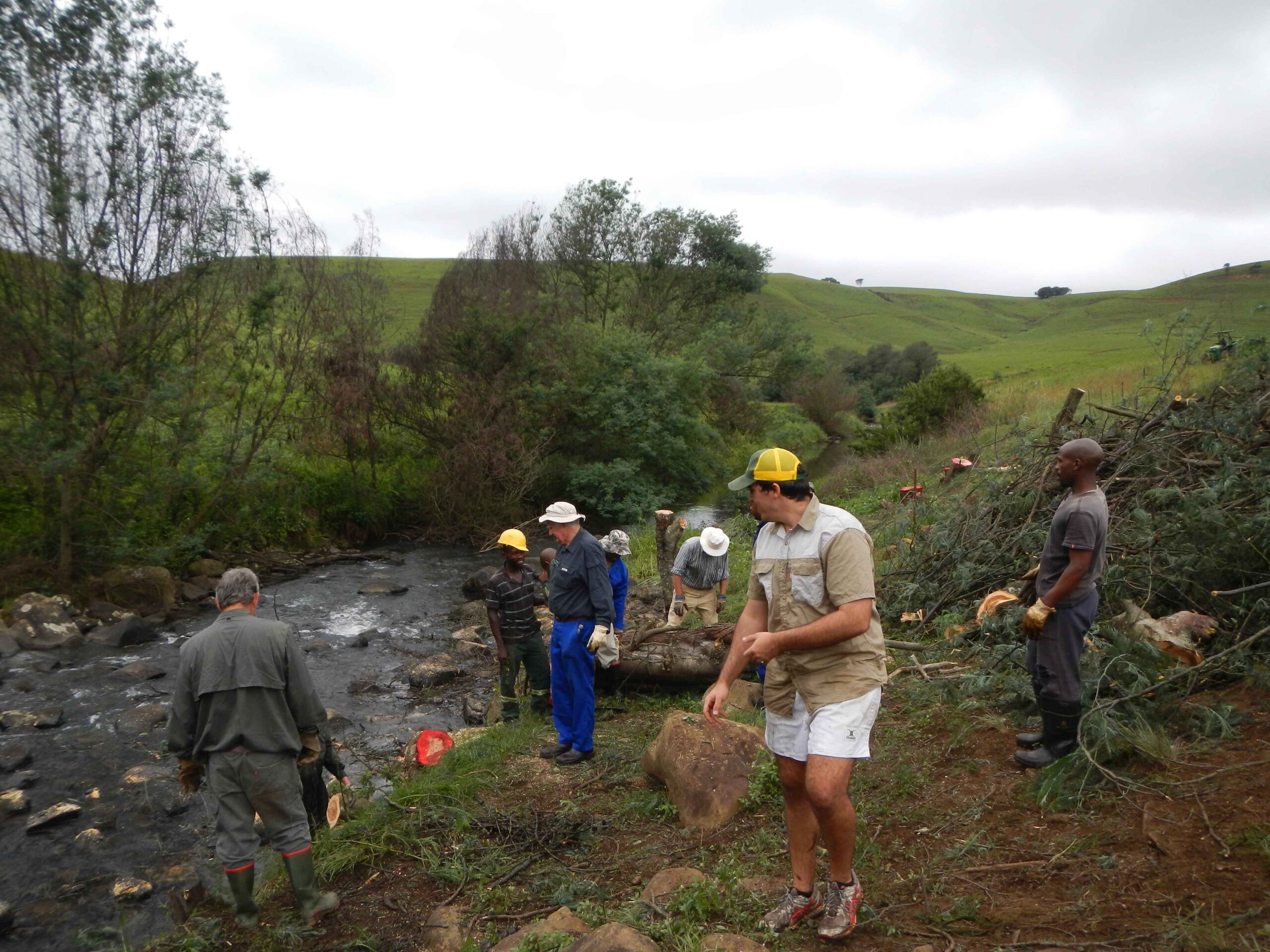The Covid 19 pandemic has served to demonstrate society’s ability to enact radical, hideously expensive, and previously unheard-of measures, to ensure the safety of mankind and in efforts to reduce suffering. Levels of patriotism, international co-operation, and goodwill to mankind in response to the pandemic are unparalleled in our times. As Mary Robinson and Daya Reddy mention in the article on the website “Project Syndicate” on 1 April 2020 (1), if only the reaction to climate change, the more insidious, but, most would argue, no less frightening or significant danger, were at the same level.
A more stark danger than climate change, although in so many ways linked to it, is the global fresh water crisis. I call it a more stark danger, because unlike climate change, no one is even arguing that water is being depleted and polluted, and the dire effect this has on so many of the same fellow humans for whom we have all felt compassion during COVID 19. Our wilful neglect of fresh water issues around the world, is in radical contrast to our reaction to the pandemic.
However, It has to be said, that the immediacy of the COVID 19 pandemic, has lead to reactions and measures which are not sustainable in the long term. Governments have knowingly plunged their economies into nose dives to stem the pandemic, based solely on the expectation that things will return to normal, and there will be ways in which economies can be pulled out of those dives. Attending to the water crisis will of course be an ongoing agenda, and the measures employed will have to be sustainable.
In the environmental fraternity, it is hoped that governments and leadership everywhere will put as much thought and energy into finding [long term] water crisis solutions, as they have for COVID 19 [short term] solutions.
So what might those long term solutions look like?
In a recent article by the Luc-Hoffmann institute in Switzerland, they explore alternative conservation funding solutions to try to replace the significant loss of revenue caused by the devastating demise of hunting revenues (2). (Caused by well meaning, environmental consciousness movements in the first world)
The Institute attempts to survey all the creative and inventive solutions being trialed or implemented around the world, in a search for those most likely to succeed. There is a plethora of mechanisms and initiatives across the globe, and it is a rich field for economists and conservationists alike to explore meaningful solutions. Central to most of these solutions is the concept of payment for ecological services, or ‘ecological infrastructure’. This concept embodies the notion that a landowner over there, acts in a way that supplies an ecological service, like for example, clean air, to a community over here, and that community needs to incentivise the landowner to continue or do more of what he is doing. Perhaps a better example is the provision of ample clean water. Typically a water catchment sees sparse human settlement, with economic activities like forestry, eco-tourism, farming and the like. Certain practices within those economic activities are to be championed by the recipients of the water downstream, and other practices need to be discouraged, if not stopped outright. In seeking global solutions, there seems to be broad recognition that the carrot is more effective than the stick. In other words it is widely accepted that punitive laws and the upholding of them, is not a robust solution. Neither does it go far enough.
So, back to incentives for ecological services.
The first and most obvious problem, is that water has historically been cheap the world over. That is to say, it has been sold at rates per kilolitre that are insufficient to develop and maintain the supply infrastructure (3). Dwellers in a city for example, have not had to pay meaningful rates per kilolitre of piped, potable water, in the sense that what they have paid has not been enough to fund required development. Water utility companies have therefore operated within the confines of historical thinking, in which they eke out water treatment solutions from a paltry revenue stream. Their work is short term, in which they fill city reservoirs with tomorrow’s water, which they treat with chemicals today. In terms of seasonal water supply needs, they may spend money on grey infrastructure (steel and concrete) building dams, which store water based on thinking that considers seasonal supply and demand. That is not to say that water utilities are not long- range planners. They are. They study drought cycles and population growth, and size dams and pipelines and reservoirs accordingly. But they are not ultra long-range planners. They are not ultra long-range planners because society and government, does not require that or expect that of them.
There is perhaps no better example than the city of Cape Town. Does anyone remember “day zero”? The city was days away from running completely dry. The press was filled with commentary of possible solutions, and the topic was top of everyone’s minds. Then it rained and the dams filled up. With that, the press moved onto the next drama, and the proponents of grey infrastructure, and their counterparts arguing for investment in ecological infrastructure, were left debating in back rooms, where their cries ceased to grab the attention of would-be corporate white knights.
There is a palpable frustration amongst players in the conservation fraternity. In the current paradigm it is their lot to approach those hoped-to-be white knight corporates, hat in hand, to see if they can channel their Corporate Social Investment (CSI) spend away from, for example, an orphanage somewhere, and into a catchment management project. It is increasingly true that donors attach performance measures to their commitments, but these are still donations and should not be confused with the purchase of services. This is the world of charity. It can be a demeaning world in which causes try to out-compete one another for the crumbs of the economy. With the advent of COVID 19, environmentalists, and in fact all charities, are fast learning how quickly those crumbs get withdrawn.
Perhaps this learning will serve to fast track solutions in which ecological services are sold, rather than being propped up with the crumbs of charity.
For that to happen there need to be significant structural changes in the way this particular economy operates in communities and countries around the world. In exploring what those changes might look like, we would do well to explore the work done at the Luc-Hoffmann Institute, and other studies like theirs.
It is possible that there also needs to be a boldness and assertiveness from the environmental fraternity, that will serve to break them from the chains of charity. For that to happen the environmental industry needs to become just that: an industry. With that comes the need for considerable business skill, which incorporates persuasiveness, leadership, confidence and assertiveness. That skill set will no doubt need to include the ability to sell!
So what might this sales proposition look like?
Here is one hypothetical scenario: (see bold text to reveal the role of the environmental institution)
The farmers in catchment X, are prompted to band together and, having been guided, agree on a best management practice protocol for water farming. They then calculate how many more kilolitres of clean water that will generate per annum, and what the cost of changing their land-use patterns to achieve that, will be. They add a mark-up, and approach a consortium of water utility companies and municipalities to make the sale.
The water utilities and municipalities have been prepped to understand a newly negotiated tax and revenue incentive that government now has on the table, so they are receptive, and this has lead them to form the consortium in question.
The consortium considers the offer, and gets help evaluating it relative to the cost, and water generation capacity of the grey infrastructure proposals currently on the desks back at the office. They ask the farmers for a few adaptations or assurances or timelines, and a deal is struck. The consortium goes back to their customers in the city and conducts a PR exercise to sell the catchment levy they plan to implement on all water bills from next year. Within 12 months, farmers are being paid to fence off their riparian zones, take sensitive land out of production, reduce stocking rates, build slurry treatment systems, and build bunded wash areas for farm spraying equipment.
Of course many of the steps highlighted above are already happening. In a widely lauded exercise right here in SA, Candice Stevens of the Wilderness Foundation Africa has been instrumental in securing tax incentives for those that proclaim Protected Area status for their properties (4). KZN based Conservation Outcomes has been successful in assisting landowners proclaim large areas as Protected areas since their inception. The WWF in South Africa has implemented water stewardship and biodiversity stewardship projects across the country, which serves to gain credibility as to what best practices might look like, and to pave the way in working with private landowners. There are a host of other examples. Most of them are founded on science, ecology and academia, and it is highly competent academics that typically lead our conservation entities.
So the building blocks are there, but it could be argued that the high level, visionary business skills are what is now required to bring the environmental industry out of the realm of charity and into the light in which the water crisis gains its rightful place on agendas across South Africa and indeed the globe.
References and further reading:
- (1) Project Syndicate:https://www.project-syndicate.org/commentary/tackling-climate-change-with-covid19-urgency-by-mary-robinson-and-daya-reddy-2020-04
- (2) Diversifying local livelihoods while sustaining wildlife: http://luchoffmanninstitute.org/wp-content/uploads/2020/02/Diversifying_Local_Livelihoods-2020_publication-FINAL_compressed.pdf
- (3) Titlemax: Affordability of water around the world: https://www.titlemax.com/discovery-center/money-finance/affordability-of-water-around-the-world/
- (4) Wilderness Foundation Africa, Innovative Finance: http://www.wildernessfoundation.co.za/teams/candice-stevens
- WWF , Water facts and Futures, rethinking South Africa’s Water Future: http://awsassets.wwf.org.za/downloads/wwf009_waterfactsandfutures_report_web__lowres_.pdf
- Western Cape Sustainable Water Management Plan: https://www.westerncape.gov.za/eadp/files/atoms/files/WC%20Sustainable%20Water%20Management%20Plan%202018.pdf
- DWAF guidelines for catchment management strategies: https://www.imesa.org.za/wp-content/uploads/2016/01/Catchment-Management_DWAF.pdf
- Daily Maverick/Louise Stafford : Clearing thirsty alien vegetation……. https://www.dailymaverick.co.za/article/2019-01-15-clearing-thirsty-alien-vegetation-set-to-bring-cheapest-solution-to-cape-towns-water-crisis/
- The Conversation: South Africa’s real water crisis: https://theconversation.com/south-africas-real-water-crisis-not-understanding-whats-needed-126361



